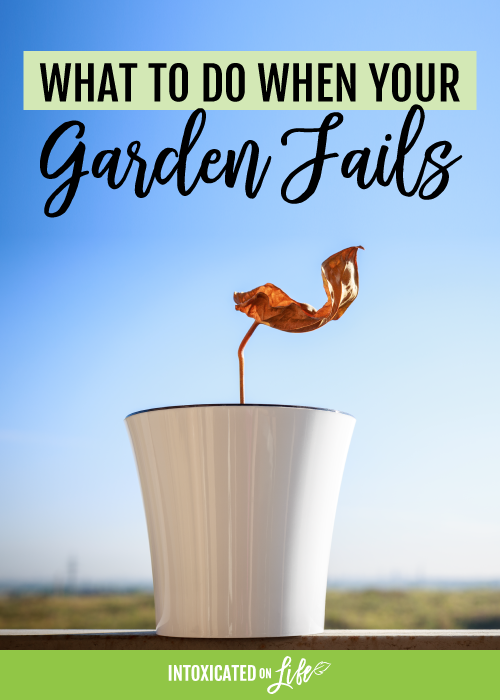The end of the summer gardening season is coming soon. Come September, I’ll be looking to see if my garden was wildly successful—or whether I’ll be chalking this year up to a learning experience.
It’s hard when you’ve invested as much time and energy into a garden to get it going as it takes, and then somewhere along the way, it all goes down the tubes. For us this year, we didn’t even get a lot of the plants in the ground that we usually do. Of the 4 trays of tomato plants I planted, we had only 5 plants germinate.

As frustrating as that was, God is still in control and He still blesses us unexpectedly. We were blessed to discover several “volunteer” tomato plants pop up in our garden. One was even my favorite yellow pear snacking tomato!
So what do you do when your hard work doesn’t pay off?
1. Praise God, the Creator and Provider.
Chances are high that you didn’t starve to death because your garden failed. There was a time in history (like all of it up until about 100 years ago) when that was a very real reality.
No matter how frustrating it is that our vision for our garden didn’t come to fruition, we should remember to be thankful to the God who provides the food we do eat.
Bottom line: Be thankful for what you do have.
2. Analyze the situation.
Why did your garden fail?
Was it pests?
Did you have an especially dry summer?
Or did you simply not have (or take) the time to maintain your garden?
You need to know why your garden failed. Once you know what went wrong, then you can take steps to fix it.
Bottom line: Understanding the problem is the first part of the solution.
3. Make changes.
Once you know what went wrong, then you need to decide how you are going to fix it.
Would better fencing keep your pests out?
Would a rainwater collection barrel make watering your garden in dry times easier?
Or are you simply in an especially busy season of life and choosing to support your local farmer’s market next year? This is a perfectly acceptable solution, too.
Bottom line: Don’t let it defeat you. Learn from it, and it’s not a failure.
4. Write it all down.
None of this matters if you don’t remember it next spring.
If you haven’t already started a garden journal, do it now. Write down what you did, the successes you did have, the failures, what you would do differently, and things that would make the job easier for you.
Bottom line: Don’t depend on your memory.
5. Try again next year.
A failure one year…or two or three…does not mean total failure. Gardening is trial and error. You will learn from your mistakes just as much as your successes.
Try a new variety of a failed plant or plant some completely different vegetables. It’s up to you.
Your garden is an empty palette waiting for you to get creative.
Bottom line: Don’t give up!










This year my seedlings were a joke, Most of them never got bigger than 1-2″. The ones I’ve tried transplanting into the
garden, they just weren’t sturdy enough to hold on. But then we went months longer with colder temps and absolutely
no sun, day after day after day this Spring. So I don’t have the varieties I want this year since I had to break down and buy seedlings from a store. So I’m not 100% happy with my garden but I’ll survive. I’ve just been direct seeding a little more
than usual so I will end up with more green beans, cukes and squash and less of my prized tomatoes, peppers, cabbage
family products and melons. There’s always next year.